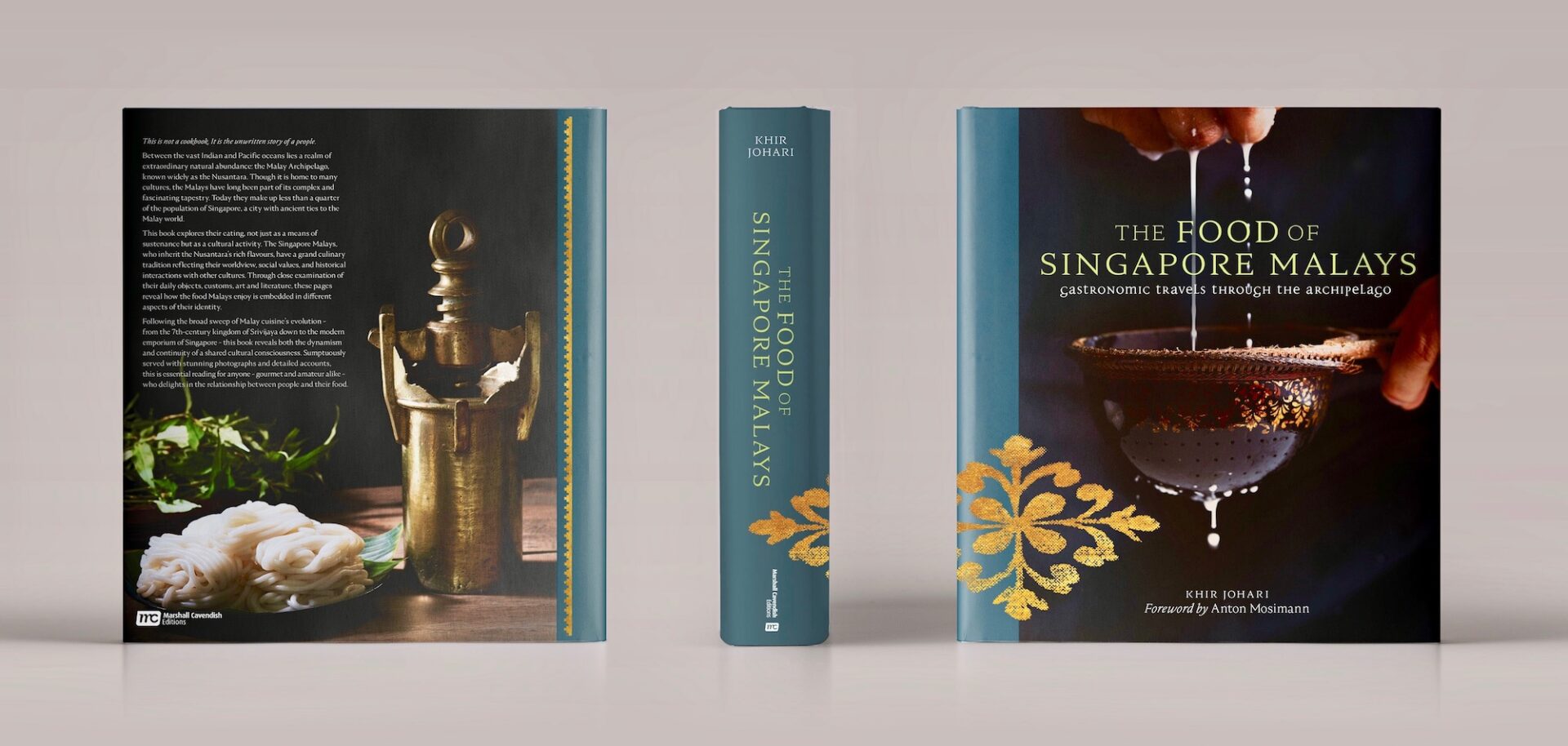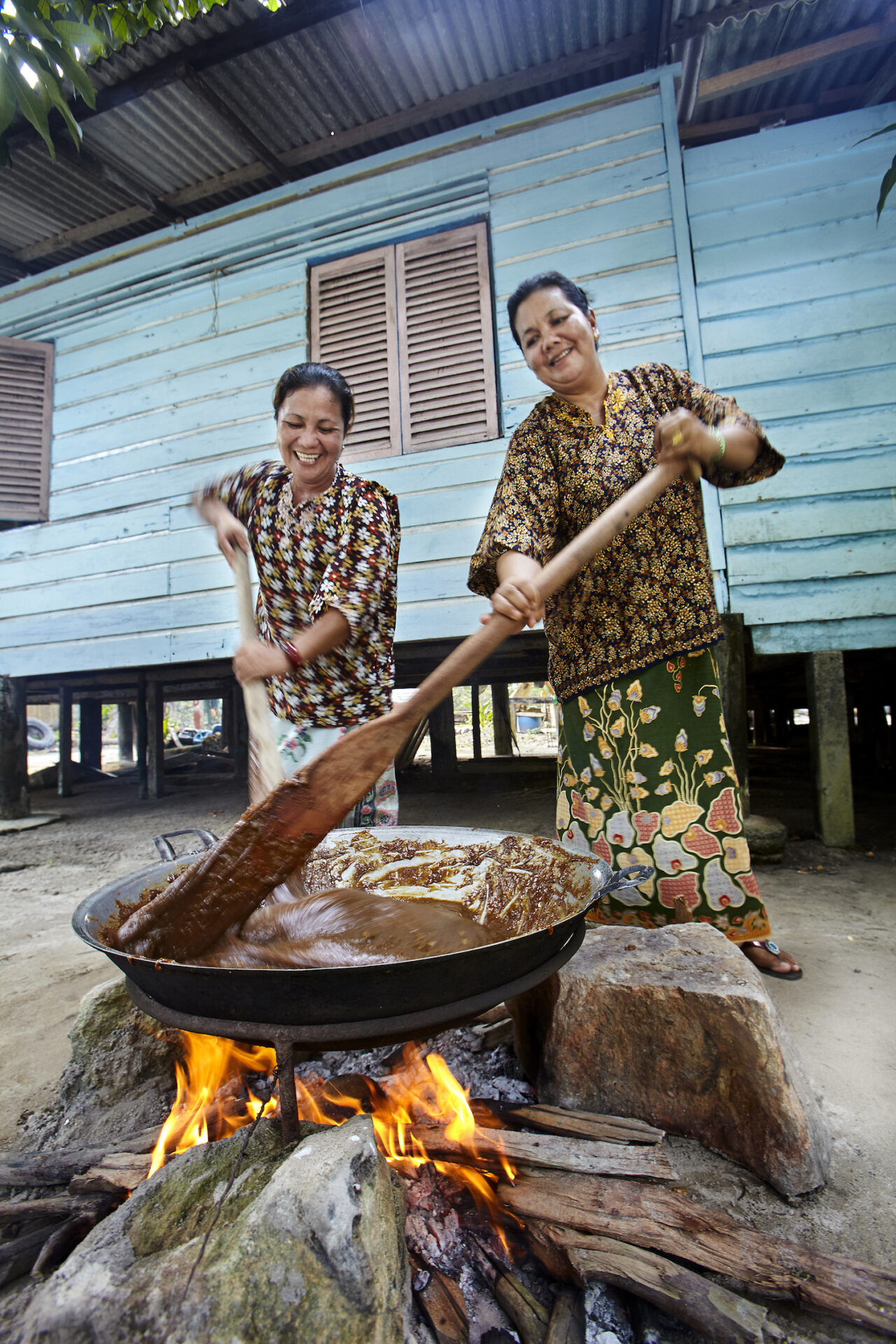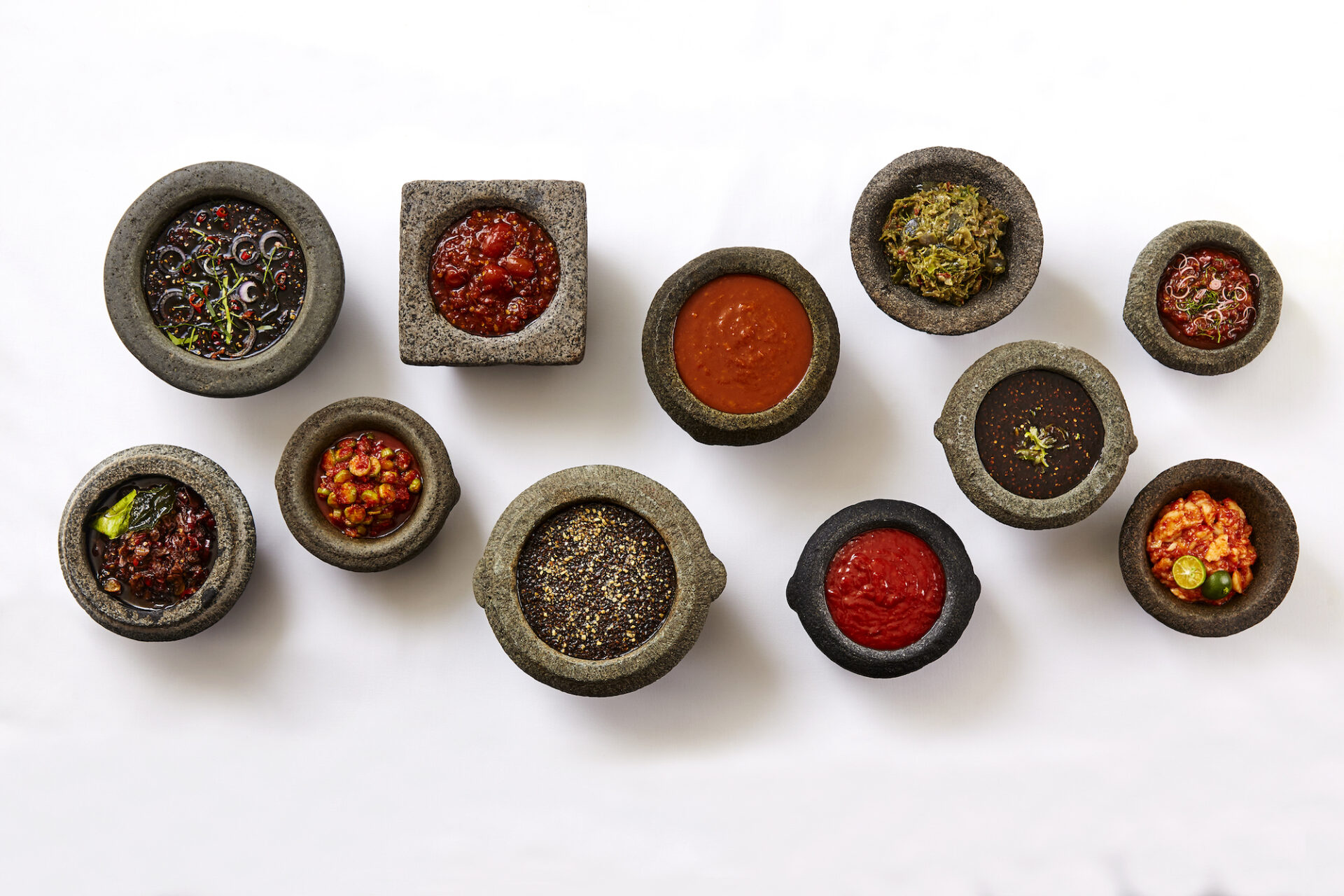No visit to Singapore is complete without a deep-dive into its food scene, be that the Michelin-starred restaurants, the mom-and-pop shophouses or the world-famous hawker centres. But while some aspects of Singapore food culture are well-known, others are being lost to time, urban development and habitat loss.
This cultural amnesia is what researcher and history buff Khir Johari set out to fight through his epic coffee table book. With more than 600 pages, 400 images and some 40 recipes, The Food of Singapore Malays: Gastronomic Travels Through the Archipelago is an unprecedented English-language investigation and celebration of the food culture of Singapore’s second-largest population. Earlier this year, the 28th Gourmand World Cookbook Awards recognised the author’s 11-year tour de force by giving the book its top prize.
Here, Khir Johari shares what’s so special about Singaporean Malay cuisine, the challenges it faces and – of course – where you can still enjoy it on your next trip to Singapore.

What defines Singapore and Singaporeans geographically is our place in the middle of the Malay Archipelago. This island has been one of the important ports of this region since at least the 13th century.
What’s more, the Malay community in Singapore specifically is unique, formed by people from across the archipelago and beyond. This includes everybody from the Javanese, the Bugis, the Minangs and the Orang Laut communities who are native to the islands that form Singapore. As such, the food of Singapore Malays is fluid, receptive and adaptable. It’s the result of the cross-cultural interactions of dishes, ingredients, techniques and culinary know-how of all these communities.
The Malay community in Singapore is formed by the Javanese, the Bugis, the Minangs and the Orang Laut. As such, the food of Singapore Malays is fluid, receptive and adaptable
But minority cuisines tend to be turned into caricatures, a dynamic I also saw while living in the US, towards Asian cuisine as a whole. The adjectives are almost always the same and point to an oversimplification of our rich traditions. For Malay cuisine in Singapore, this is likely due to a lack of representation. What is sold in hawker centres – as wonderful as they are – is not representative of the culinary canon of the Malay world. Our treasured hawkers also operate under price pressures, and their primary need is economic.
Writing The Food of Singapore Malays for me has been a cultural calling that took 11 years. Malay food is under-researched and under-recognised, and a dedicated book around it didn’t exist. I interviewed people on the ground, from cookery teachers to housewives, visited museums, pored through historical materials going back to the seventh century Srivijaya Empire and translated ancient steeles. The result is a book with centralised vital information which would otherwise have remained untranslated, dispersed and not entered into the English vernacular or mainstream conversation.

In reality, Malay cuisine features a wide range of boiled, steamed, grilled and soup dishes. Ulam – a class of botanicals which include leaves, shoots, flowers, fruit and rhizomes with culinary and at times medicinal applications – are actually at the heart of a Malay meal. Today, they are not ingredients you can buy at the supermarket. You’d have to go to Geylang Serai, and even then only a few varieties are available.
We are in danger of losing our culinary memories and forgetting how we used to eat before the industrialisation of Singapore. Kaya for instance, actually known as serikaya, has been attributed to the Portuguese or Hainanese cooks who arrived in Singapore. But the Filipinos, Thais and Vietnamese in regions untouched by the Portuguese all have versions of an egg-coconut spread sweetened with palm sugar. The earliest record in the Malay world appeared in a 1620 manuscript by the royal family.
This book contains centralised vital information which would otherwise have remained untranslated, dispersed and not entered into the English vernacular or mainstream conversation
Secondly, our heritage food is disappearing because the passing of this culinary knowledge from generation to generation has been broken. Most of these recipes are part of our undocumented oral history. When an elder passes away, it’s like a library disappears.
Then there is urban progress and habitat loss. Where we once had a dizzying array of Malay herbs, they are now no more. For example, the umbut (heart of the palm tree), used in salads or stir fries, is now a rare ingredient as our coconut groves are no more. Due to Singapore’s land reclamation efforts, we have also lost much of the native mollusks and crustaceans that we used to source for food, such as the “local escargots” called siput bakau and mangrove crabs. The belot (river eel) was once found in our rivers and simply fried or served in dishes like gulai (curry) – but no longer. Fruits such as the kuini (mangifera odorata), a very fragrant mango, and binjai (mangifera caesia) are almost gone from our natural landscapes.
This book is a monumental project. Putting together something like this takes a real burning passion and drive. I felt at times like I’d bitten off more than I could chew, but it was a calling. I am grateful to have been able to make this contribution to society. Seeing it published and go on to win one of the world’s most prestigious book awards is one of my life’s greatest accomplishments.

Where to taste Malay food in Singapore
From Kampong Glam to Changi, these are some are some of Khir Johar’s top recommendations
Warong Pariaman
Warong Pariaman is in the heritage Kampong Gelam district. I like to come here for the most authentic nasi padang – rice and curries –experience. For starters, they still steam their rice there and cook their dishes with charcoal which imparts the smokiness that’s missing in many other establishments. 738 North Bridge Road
Hathaway
Dempsey is a great place for visitors and lunch at Hathaway would be my idea of a good meal. While it is billed as a Modern Asian restaurant, it has many dishes and elements of Malay cuisine, like sambal belimbing (chilli relish with starfruit), bergedil (fried potato patty) and rawon (beef soup). Block 13 Dempsey Rd, #01-07
Geylang Serai Hawker Centre
Geylang Serai doesn’t always appear on the tourist trail so readers looking for something genuine and local would love this place. The hawker centre on the second floor as a collective is a real treasure and I especially like to eat here after doing a round of marketing on the ground floor. 1 Geylang Serai
Hjh Salbiah
Changi is very much out of the way for most tourists but the more adventurous readers might want to hop across to Pulau Ubin to see what pre-industrial Singapore looks like. On the way, I’d recommend Hjh Salbiah’s stall at the hawker centre. It’s a nasi campur (rice and curry platter) eatery that I enjoy for their freshness and the amount of detail they put into the preparation of the food. Changi Village Rd, #01-04 Village Hawker Centre
Orang Laut SG
Visitors spending the weekend in Singapore can look to dishes by @oranglautsg on Instagram. The Orang Laut community are native to the grouping of islands that form modern Singapore and the people behind this initiative have a deep knowledge of indigenous marine life. Their food is home cooked, rustic and delicious. To eat their cooking is to experience their deep knowledge. To order, readers can head to https://oranglaut.sg.
All photos by Law Soo Phye. Photos courtesy of Khir Johari.
The post “We are in danger of losing our culinary memories,” says Malay food historian Khir Johari appeared first on SilverKris.
from SilverKris
No comments:
Post a Comment